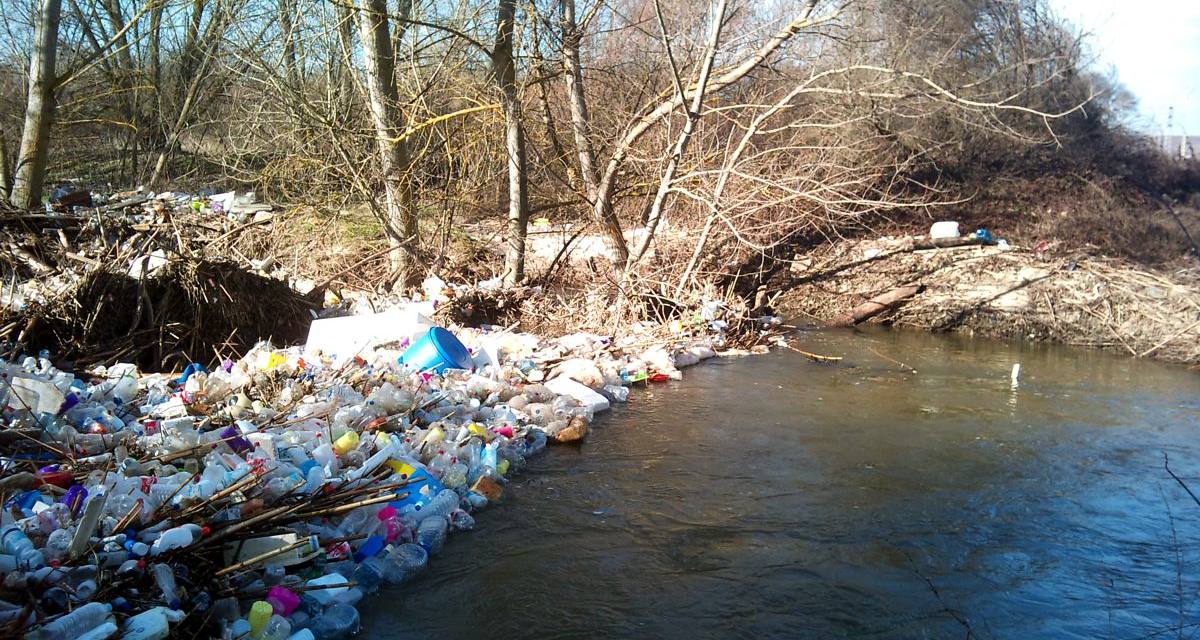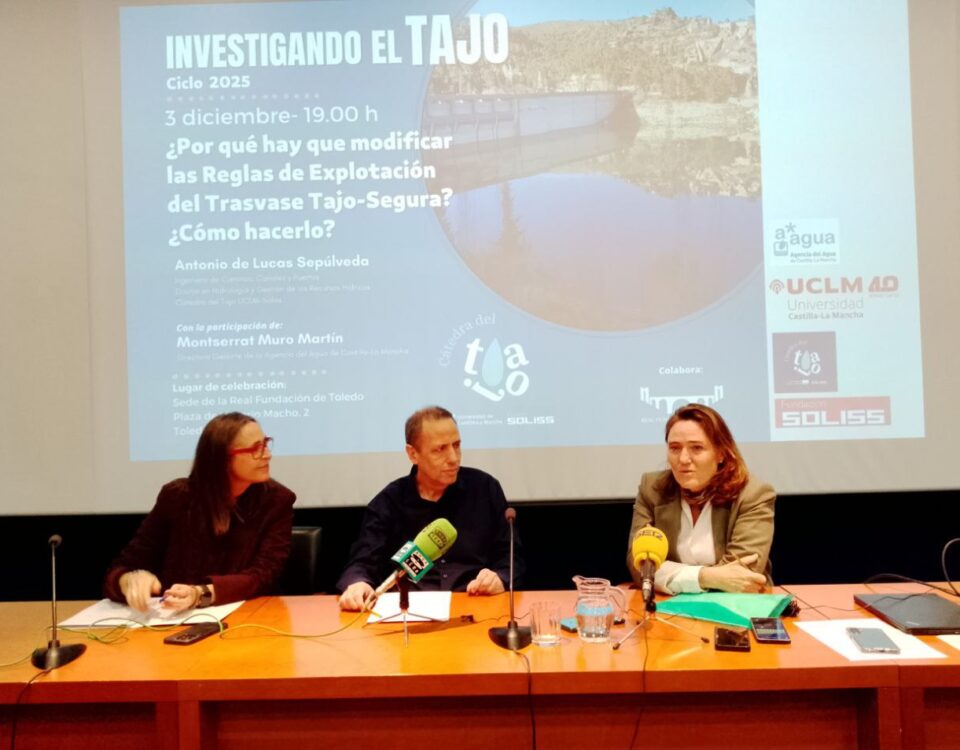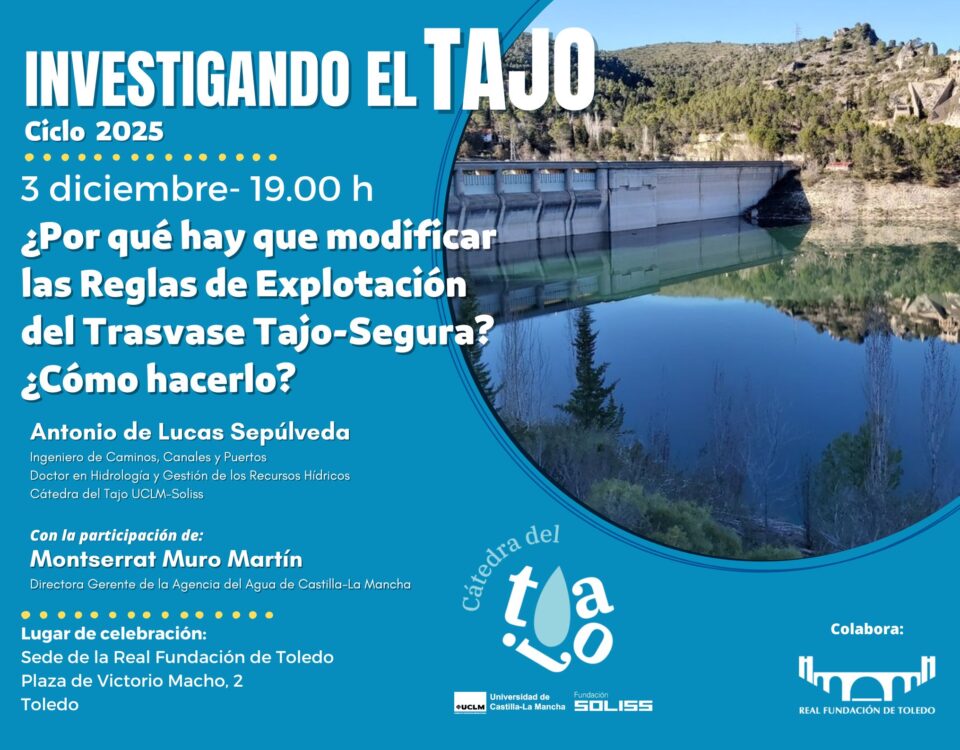
The Tagus UCLM-Soliss Chair is involved in the recovery of the lower section of the Guadarrama River
25/04/2022
Investigating the Tajo: The video of the conference on subsidies and rates for the Tagus-Segura transfer by Beatriz Larraz and Enrique San Martín, from the UCLM-Soliss Tajo Chair, is now available
05/05/2022The flows that circulate through the Tagus River are quite different from those that circulated when it was in its natural state, before the construction of its large reservoirs. The reason is the overregulation of the basin and specifically its headwaters to supply the large urban and agricultural demands (from the Tagus and the Segura). This results in the deterioration of the ecological state of the riverFor example, species native to the river have disappeared, other invasive species have arrived that adapt more easily to new circumstances, and the riverside forest has disappeared in certain areas. However, In Hydrological Planning there is a powerful tool to make uses compatible with the ecological processes of the rivers: they are the so-called ecological or environmental flows, which reduce the negative environmental effects of excess regulation.
Ecological flows are included in our legal system as a measure for the conservation and recovery of the natural environment, according to the consolidated text of the Water Law. According to said text and the Hydrological Planning Regulation, they have the purpose of conserving and recovering the natural environment, as well as maintaining “at least the fish life that would naturally inhabit or could inhabit the river, as well as its riverside vegetation” also allowing “to sustainably maintain the functionality and structure of the aquatic ecosystems and the associated terrestrial ecosystems.” In Planning, ecological flows contribute to achieving the good condition of our rivers.
Ingredients for a living river
To truly fulfill this function, ecological flows cannot be reduced to a fixed amount of water, since Naturally, the water that flows through rivers has variations in magnitude, in frequency, in duration and at different times of the year. These flow variations are key to maintaining and conserving diversity in habitats and, consequently, in the biological populations of river ecosystems. To address them, ecological flows have several components, each of them fulfilling a specific purpose. Therefore, it is more appropriate to talk about establish an ecological flow regime.
The components of the ecological flow regime are:
Minimum flow: It is the lowest flow necessary so that the structure of the river and the habitats that support life are preserved and can develop their functions. It must be overcome since, below it, many organisms would die.
Maximum flow: It is the flow that must not be exceeded in the river due to the ordinary release of flows from a dam. Its function is to not harm the most vulnerable native species, since a flow that exceeds the critical speed drags downstream and reduces populations due to depletion.
Both the minimum and maximum flow must be differentiated by month for a better approximation to the natural state, where the river fluctuated continuously depending on rainfall and geomorphological characteristics, with its species adapted to these movements.
Generating flow, flood or flood: It is what originates the morphology of the channel and is established by imitating the ordinary floods of the river, allowing the fertilization of the flood plain. For researchers Diego García de Jalón and Marta González del Tánago, has the function of maintaining the river substrate and riverside vegetation in good condition. It is essential to maintain natural dynamics and good ecological status.
Exchange rate: refers to the changes in the volume of flow released by a dam per unit of time to avoid the negative effects of a sudden variation in flow. These effects can be the dragging of aquatic fauna during the rising phase, or their isolation in the falling phase of the flows. They must also take into account the maintenance of favorable conditions for the regeneration of aquatic and riverine plant species.
Illegalities in the Tagus
All these components form the ecological flow regime and their inclusion in the contents of the basin's hydrological plans comes imposed by the Water Law. However, as explained María Soledad Gallego, an environmental lawyer, the Tagus Hydrological Plan of the second cycle—the current one—only established minimum flows, and only for 5% of the water masses in the basin. Furthermore, in the three masses of the Tagus River as it passes through Aranjuez, Toledo and Talavera de la Reina, a constant, non-ecological minimum flow was approved, determined without prior studies or justification. This gave rise to five legal appeals that ended in 2019 with as many others. Supreme Court rulings that repealed the articles of the Plan referring to ecological flows and forced the Confederation to establish a regime of ecological flows with all its components in all water masses of the basin.
However, the third cycle Plan, currently being processed, does not comply with current legislation either. It does establish the minimum ecological flows in all bodies of water, although with a slight quarterly variation, instead of monthly. But the flows of the central section of the Tagus are relegated to 2027 and the rest of the components are set in very few reservoirs: only in 15 of the more than 200 reservoirs that the Tagus River has.
Correct an environmental disaster
In the Tagus, the absence of a minimum ecological flow regime prevents the functionality and structure of the ecosystems from being maintained sustainably; The absence of generating flows means that the adjacent plain outside the ordinary channel is not flooded, favoring the loss of river space and that the riparian vegetation is reduced to a narrow band, in the opinion of the researcher Domingo Baeza. Furthermore, since there are no defined exchange rates, the negative effects generated by hydroelectric dams, since they release large amounts of water in very short periods with serious consequences for protected species. A case With great media impact, it occurred in 2013 in the Monfragüe National Park, where a black stork chick died due to flooding of its nest and half of the clutches of other species threatened with extinction were lost.
Therefore, for the consolidated text of the Water Law to be complied with, it is essential that the new planning – expected in June of this year – establishes a complete and more environmentally demanding ecological flow regime. Only in this way will it be possible guarantee the good condition of surface and groundwater, as required by the Water Framework Directive.




